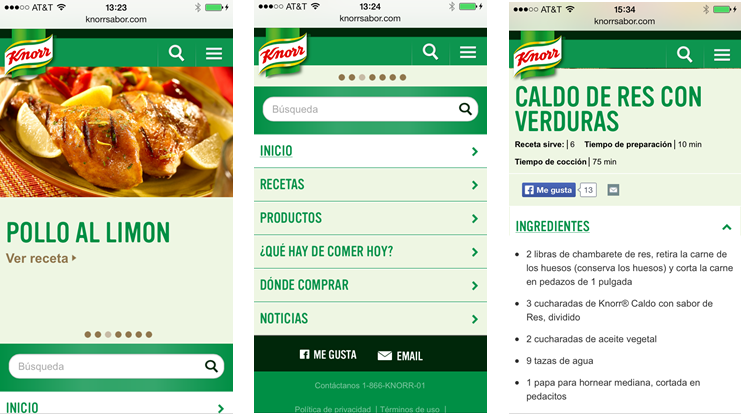Using Competitive Analysis to Identify Brand Growth Opportunities with Online U.S. Hispanics
In this two-part series, we explore three critical assessments brands can perform to determine where opportunity lies for growth with a Hispanic audience. Read on for Part 1, covering competitive analysis.
More and more, brands are realizing that the U.S. Hispanic audience is large, growing, tech savvy, and particularly receptive to online marketing. This presents a huge opportunity for many brands to drive growth. One question we hear often from brands ready to venture into the Hispanic digital market: Where do we start?
We recommend starting where good strategy should begin – with data. Analytics data can be used to uncover opportunities for reaching and engaging with U.S. Hispanics online through digital marketing investments. One of the important areas to analyze is your competitors. Through competitive analysis, a brand can consider how its competitors are investing in Hispanic digital marketing and become better informed on the best tactics to successfully reach and engage with the Hispanic online market.
COMPETITIVE ANALYSIS KEY QUESTIONS: WEBSITE
There are some baseline questions to ask when performing a competitive digital analysis, to frame the context for your brand’s comparison and gain perspective on your industry’s exposure to the Hispanic online market.
-
Hispanics are thirsty for online content. Does your competitor have a Spanish content website? If so, is the content unique or is it a direct translation of the content on the English website?
-
Mobile is huge with Hispanics. How does a competitor’s website address mobile? Is the website a responsive site? Is the website mobile optimized?
-
What is traffic volume like for the Spanish versions of competitor websites vs. their English sites?
- Where are competitors investing money to attract Hispanic visitors? Does it look as if they are investing in social campaigns, email campaigns, paid search, or SEO?
COMPETITIVE ANALYSIS KEY QUESTIONS: SOCIAL PRESENCE
As we’ve said before, social media marketing truly flourishes with Hispanics. Brands should evaluate a competitor’s social presence to again gain perspective on which social platforms are being utilized and what types of content are being promoted to the Hispanic audience.
-
What social channels are competitors using to reach Hispanics effectively?
-
What is typical engagement like, and what usually provides the highest engagement for the brand?
-
Are social posts written in English, Spanish, or Spanglish? Within Facebook is the Spanish content language gated?
-
Spanish language posts are one thing, but promoting culture is where brands can really connect with Hispanics. How is Hispanic cultural relevance included in your competitor’s social posts, if at all?
-
Do they use Hispanic influencers to promote social engagement? Are Hispanic influencers involved in Twitter parties or Facebook chats?
-
Online video is having a major moment in the Hispanic space right now. Does your competitor have a YouTube presence? What type of video content is available, and in what language?
WHO DOES IT WELL? RECOGNIZING SUCCESS
Part of the work in doing a competitive analysis is recognizing when a competitor is winning with Hispanics. Below are two examples of successful tactics in reaching and cultivating the U.S. Hispanic digital audience.
When targeting online Hispanics, mobile is a great place to start. Hispanics over-index on mobile consumption, so if analytics data for your website demonstrates a strong Hispanic audience and high mobile usage, then mobile is definitely something to consider. A great example of using mobile effectively is Knorrsabor.com, Knorr’s mobile optimized Spanish website. The Knorr Sabor mobile site creates a clear, streamlined user experience for the mobile visitor, making it a more attractive destination for mobile-loving Hispanics than a non-responsive, outdated mobile site.

A great example of social presence done well is CoverGirl, who modified their spokesperson messaging and delivery between general market and Hispanic market using language gating. Language gating posts can be very effective in engaging the Hispanic audience with more culturally relevant posts and other unique content. In the example below, CoverGirl taps the Hispanic actress Sofia Vergara for a Spanish language targeted Facebook post, while singer Katy Perry is used for a general market Facebook update.

Taking a look at what competitors are doing to reach the coveted U.S. Hispanic audience is just one step toward developing a Hispanic strategy designed for success. Next, we’ll explore two more critical actions you can take by looking at your own brand. Stay tuned for Part 2: Website Audit & Social Channel Evaluation.
![]()
